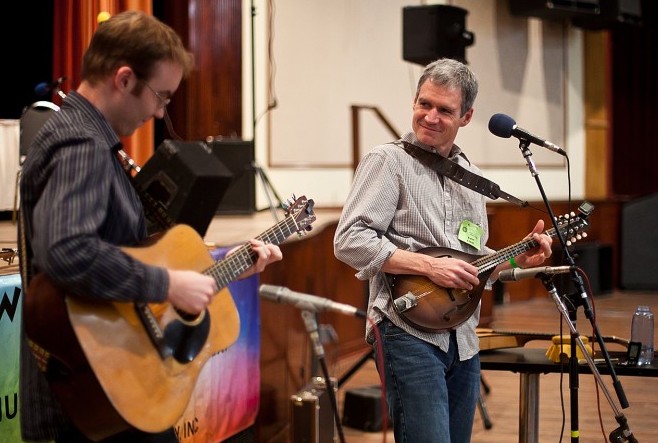NEW YORK—It’s not just southern states like Kentucky that have the rich tradition of folk music. New Yorkers too sung their tales and played many a lively tune on the fiddle in the days before television and radio. Some musicians, such as Dave Ruch, are keeping that tradition alive.
Ruch has dusted off archived songs and picked the tunes from the living memory of the few New Yorkers still steeped in the traditions.
“I love the chase,” said Ruch. While the English, Irish, and Scottish tunes survived into posterity, the German and Dutch songs faded; and barely a trace is left of the songs brought from Africa by the slaves.
Songs on a variety themes once filled the kitchens and the leisure hours of New Yorkers: the low bridges over the Erie Canal, dreams of the fortune to be found out West, tragic accidents, loves lost, loves gained, life in lumber camps, and “sometimes local tales, more often tales they didn’t know the origin of,” said Ruch.
At the Eisteddfod Folk Music festival in Kerhonkson, N.Y., on Nov. 6, Ruch sang a song about a husband and wife arguing over whether they should stay put and tend their New York farm, or venture west where they could live off Buffalo meat and gold. The husband dreams,
I’ve a mind to forsake my plow and my cart
Off to Wisconsin on a journey I'll go
To double my fortunes as other folks do
The sensible wife entreats, “Oh stick to your farming and suffer no loss, for the stone that keeps rolling will gather no moss.” When that does not convince her husband, she appeals to his love for her and their children,
Is surrounded by injuns who murder by night
They'll plunder our cabin, burn it to the ground
While your wife and your children lay murdered around
This threat extinguishes his wanderlust and he continues the northeast farmer’s life.
The journey down the Erie Canal was a common one for traders, and many a song sprouted up about the low bridges, built so low because less material meant less cost. The canal cost a whopping $7 million in those days, without any aid from the federal government.
One song warned: “Oh look out! That Low Bridge, Look Out! That Low Bridge!” The song was actually written for the Vaudeville stage around the 1880s, but it describes the experience of traders on the canal at that time.
Old folk meet new city
George Edwards, born in the 1870s, grew up in the Catskill Mountains and could sing 100 songs from memory. His voice wasn’t polished, but it had the straightforward and simple carriage that was the New York folk style.
In the 1940s, scholars recorded his songs and brought Edwards, considered a “living relic,” to New York City.
But, it was foreign terrain for the folk singer. The city’s noise kept him awake, so he stepped out of his hotel for a wander and couldn’t find his way back again. Edwards asked someone which way to the Hudson River and, as the story goes, walked 10 days along the river until he arrived back home.
Native American and European music mingle
Ruch sang a chant that once filled Iroquois long houses. The Iroquois would sing it as they circled the fire; the wind created by their movement would push the smoke up through a hole in the roof. The song has no words, just “vocables, or nonsense syllables,” says Ruch.
He beat a deerskin water drum as he invoked the old ritual.
The Native Americans adopted some of the European music as well. It was limited, however, to the jaw harp and the Christian hymn.
The jaw harp, then known as the Jew’s harp, is a small metal instrument about the size of a finger that makes a sort of reverberating boing sound. It conveniently fit in the shirt pocket of New Yorkers who would pull it out to keep the beat as they sang during a break from their work. It was brought over by the pilgrims.
One harp was worth six beaver skins when trading it to the Indian and it was “played up and down the Erie Canal right up until the 20th century,” said Ruch.









